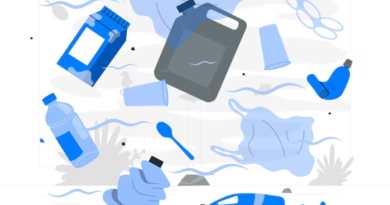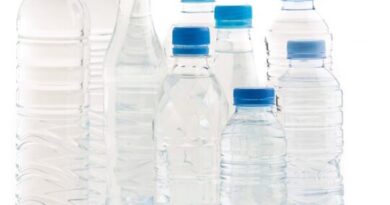Innovating Sustainability: The Dual Power of Recycling and Upcycling
As the urgency of environmental issues grows, recycling and upcycling emerge as essential strategies for fostering sustainability. These practices, while closely related, offer unique approaches to minimizing waste and enhancing resource efficiency. This blog delves deeply into the significance of recycling and upcycling, exploring their benefits, differences, and practical ways to integrate them into our daily lives for a sustainable future.
The Essentials of Recycling:
Recycling is the process of converting waste materials into new products. This complex procedure involves collecting, sorting, cleaning, and reprocessing items that might otherwise end up in landfills or incinerators. Recycling aims to conserve resources, reduce energy consumption, lower greenhouse gas emissions, and prevent pollution.
Key Advantages of Recycling:
1. Resource Conservation:
Recycling reduces the demand for raw materials, helping preserve natural resources such as forests, water, and minerals. For example, recycling one ton of paper can save 17 trees and 7,000 gallons of water.
2. Energy Efficiency:
It often requires significantly less energy to manufacture products from recycled materials than from raw materials. For instance, producing aluminum from recycled materials uses 95% less energy than producing it from bauxite ore.
3. Pollution Control:
Recycling decreases pollution associated with the extraction, processing, and disposal of raw materials. By reducing the need for mining and refining, recycling helps lower air and water pollution.
4. Landfill Reduction:
It lessens the volume of waste sent to landfills and incinerators, which can reduce land degradation, lower methane emissions from landfills, and decrease the need for new landfill sites.
Effective Recycling Practices:
1. Understand Local Guidelines:
Familiarize yourself with your local recycling regulations. Different municipalities have varying rules about what can and cannot be recycled. Common recyclables include paper, cardboard, glass bottles, aluminum cans, and specific plastics.
2. Clean and Sort:
Rinse recyclables to remove any food residue and sort them according to local recycling protocols. Contaminants like food waste can spoil whole batches of recyclable materials.
3. Avoid Contamination:
Ensure that only recyclable items are placed in the recycling bin. Non-recyclable items such as plastic bags, styrofoam, and certain types of glass (like windows or mirrors) can contaminate the recycling stream, making the process less efficient.
4. Stay Informed:
Recycling technologies and guidelines evolve. Stay updated on new developments and practices to ensure your recycling efforts are as effective as possible.

The Art of Upcycling:
Upcycling, on the other hand, offers a creative twist on the concept of recycling. It involves transforming discarded materials or products into items of higher value or utility. Upcycling emphasizes creativity and innovation, providing a way to repurpose items that might otherwise be considered waste.
Benefits of Upcycling:
1. Creativity Boost:
It encourages innovative thinking and problem-solving, leading to unique, personalized creations. Upcycling transforms everyday objects into art or functional items, fostering a sense of accomplishment and creativity.
2. Cost Efficiency:
Upcycling can be a cost-effective way to create useful and aesthetically pleasing items without purchasing new ones. This practice can save money and reduce the consumption of new products.
3. Heritage Preservation:
Upcycling often involves repurposing vintage or discarded items, helping preserve cultural and historical artifacts. This practice can give new life to items with sentimental or historical value.
4. Environmental Conservation:
Upcycling helps reduce waste by repurposing items, thus diminishing the need for new materials and lowering environmental impact.
Getting Started with Upcycling:
1. Spot Opportunities:
Identify items around your home that can be repurposed, such as old furniture, clothes, or containers. Think about their potential new uses instead of their original purposes.
2. Seek Inspiration:
Use platforms like Pinterest, Instagram, and DIY blogs to find upcycling ideas and tutorials. There are countless projects and ideas available to inspire your creativity.
3. Gather Supplies:
Collect the necessary tools and materials, like paint, glue, hardware, and fabric. Having the right supplies can make the upcycling process smoother and more enjoyable.
4. Begin with Simple Projects:
Start with straightforward upcycling projects to build confidence and skills. Simple projects like turning old jars into planters or refurbishing a piece of furniture can be great starting points.
5. Join a community: Participate in upcycling workshops, online forums, or local community groups. Sharing ideas and collaborating with others can enhance your skills and provide new inspiration.
Integrating Recycling and Upcycling into Everyday Life:
To fully embrace a sustainable lifestyle, it’s essential to incorporate both recycling and upcycling into our daily routines. Here are some practical steps to get started:
1. Educate and Advocate:
Learn about the environmental impact of waste and the benefits of recycling and upcycling. Share this knowledge with your community, family, and friends to spread awareness and encourage collective action.
2. Prioritize Reduction:
Focus on reducing waste by choosing reusable products and cutting down on single-use items. This step reduces the amount of waste that needs to be managed through recycling or upcycling.
3. Reuse and Repurpose:
Before discarding anything, consider how it could be reused or given a new life. For instance, glass jars can be used for storage, and old clothes can be turned into cleaning rags or quilting material.
4. Support Eco-friendly Brands:
Purchase from companies committed to sustainability and the use of recycled materials. Supporting these brands can help drive market demand for recycled and upcycled products.
5. Engage Locally: Participate in community recycling programs, upcycling workshops, and environmental initiatives. Getting involved locally can provide support, resources, and motivation to maintain sustainable practices.
Looking Ahead: The Future of Recycling and Upcycling:
As technology and environmental awareness continue to evolve, both recycling and upcycling are set to become even more effective and widespread. Innovations such as chemical recycling and advanced sorting technologies are improving the efficiency and purity of recycling processes. These advancements make it possible to recycle more types of materials and reduce contamination rates.
The upcycling movement is also gaining momentum, with artists, designers, and entrepreneurs creating remarkable products from discarded materials. From fashion to furniture, upcycled products are becoming more mainstream, showcasing the potential for creativity in sustainability.
Educational programs and initiatives are expanding, helping people of all ages understand the importance of waste reduction and resource conservation. Schools, universities, and community organizations are incorporating recycling and upcycling into their curricula and outreach efforts, fostering a culture of environmental stewardship from a young age.
In conclusion, recycling and upcycling are not just trendy buzzwords but essential practices for a sustainable future. By adopting these practices, we can significantly reduce waste, conserve resources, and nurture a culture of innovation and environmental stewardship. Embrace the power of recycling and upcycling, and contribute to a cleaner, greener planet. Together, we can make a lasting impact on our world and create a legacy of sustainability for future generations.
FAQs:
1. How do recycling and upcycling differ in their processes and outcomes?
Recycling involves processing waste materials into new, reusable forms. This typically entails breaking down items into their base components before re-manufacturing them into new products. Examples include melting down glass bottles to create new glass products or shredding paper to produce recycled paper. Upcycling, conversely, focuses on creatively repurposing items without breaking them down. It transforms waste materials or unwanted products into new, higher-value items, such as turning an old ladder into a bookshelf or using wine corks to make a bulletin board. Upcycling maintains the original item’s form and enhances its value through innovative redesign.
2. What are some beginner-friendly upcycling projects I can try at home?
Starting with upcycling can be fun and accessible even for beginners. Here are a few simple projects:
- Tin Can Planters: Clean out old tin cans and paint them to use as planters for herbs or small flowers.
- T-Shirt Tote Bags: Convert old T-shirts into reusable tote bags by cutting and sewing the bottom hem and sleeves.
- Wine Cork Coasters: Glue together wine corks to create custom drink coasters.
- Jar Organizers: Paint and label old glass jars to use as storage containers for office supplies, spices, or small household items.
- Furniture Makeovers: Sand and repaint old furniture pieces to give them a fresh look.
3. Which materials are commonly accepted in recycling programs, and which should be avoided?
Typically accepted materials in recycling programs include:
- Paper: Newspapers, magazines, cardboard, and office paper.
- Plastics: Bottles, containers, and packaging with appropriate recycling symbols (check local guidelines for specifics).
- Glass: Bottles and jars that are clean and free of residue.
- Metals: Aluminum cans, tin cans, and foil.
Materials generally not accepted include:
- Plastic Bags: These often cause issues in recycling machinery and should be taken to special collection points.
- Styrofoam: Rarely accepted in curbside programs due to its low recyclability.
- Ceramics and Non-Recyclable Glass: Items like Pyrex, light bulbs, and mirrors often have different compositions that aren’t suitable for typical recycling processes.
- Food-Contaminated Items: Pizza boxes with grease or any food-soiled materials can spoil recyclable batches.
4. What steps can I take to ensure my recycling efforts are effective and avoid contamination?
To make your recycling efforts more effective:
- Clean Items Thoroughly: Ensure all recyclable containers are rinsed and free from food and liquid residues.
- Follow Local Recycling Rules: Understand and adhere to your local recycling program’s guidelines regarding what can and cannot be recycled.
- Properly Sort Materials: Separate items as required by your local recycling program, such as keeping paper and plastics separate.
- Avoid Guessing: Place only confirmed recyclable items in the recycling bin. When in doubt, consult your local recycling center or resources.
- Educate Your Household: Make sure everyone in your home is informed about the recycling rules to prevent accidental contamination.
5. What environmental advantages does upcycling offer compared to traditional recycling?
Upcycling provides several environmental benefits:
- Energy Savings: Upcycling generally requires less energy than recycling, as it avoids the need for industrial processing.
- Waste Reduction: By directly repurposing items, upcycling minimizes the amount of waste sent to landfills.
- Reduced Carbon Emissions: Upcycling cuts down on the need for new raw materials, thus lowering the carbon footprint associated with production and transportation.
- Resource Efficiency: It preserves the inherent value and materials of items, extending their lifespan and reducing the demand for new resources.
- Fostering Creativity: Upcycling promotes innovative thinking and sustainable practices, encouraging people to see potential in discarded items.




